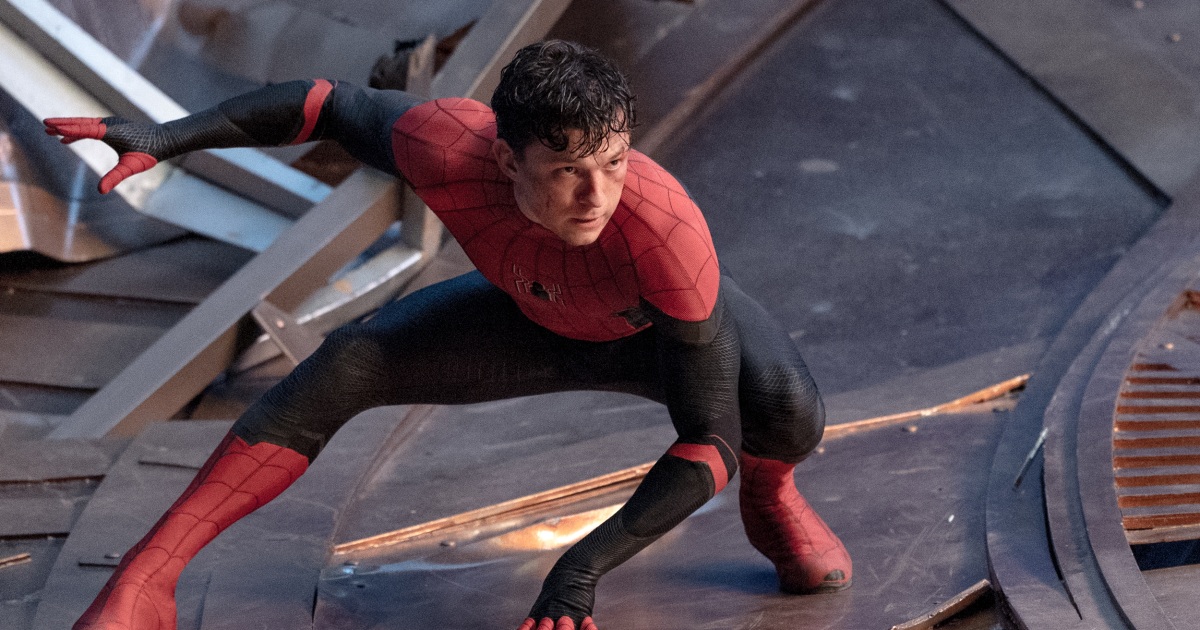
It’s been two decades since the Marvel blockbuster era began with 2000’s “X-Men,” but somehow 2021 has been the comic book studio’s most prolific year yet. Between Disney’s Marvel Cinematic Universe (MCU) and Sony’s Spider-Man Universe, 10 titles arrived in the last 12 months. The tenth and final premiere is, fittingly, a crossover film co-produced by both studios: “Spider-Man: No Way Home,” the last installment of the current webslinger trilogy. An overstuffed homage to Sony and Marvel’s two decades in the Spider-fam business, the film nevertheless manages to be utterly charming, a feel-good two-and-a-half hour last hurrah for fans before omicron shuts everything down again.
Although still centered around the kid from Queens who becomes a superhero after being bitten by a radioactive spider, the current iteration is distinct from its predecessors.
The current Spider-Man “Home” trilogy, starring Tom Holland as Peter Parker, is Sony’s third run at a successful live-action franchise since securing the rights from Marvel Comics in the late 1990s. Although still centered around the kid from Queens who becomes a superhero after being bitten by a radioactive spider, the current iteration is distinct from its predecessors. Unlike the first two versions, Sony worked directly with Marvel Studios, allowing crossover characters and storylines from the Disney-owned franchise.
To wit, the new film brings in Dr. Stephen Strange (Benedict Cumberbatch) from the MCU along with his buddy Wong (Benedict Wong). Peter comes to the two for help after longtime Spider-Man-hating journalist J. Jonah Jameson reveals his identity in a viral video. (Jameson is played here by J.K. Simmons, who originated the role 20 years ago in the first “Spider-Man” trilogy. There he was a 40-something newspaper man, here he is a 60-something Alex Jones-esque conspiracy theorist, and both iterations of the character work equally well.) Jameson’s reveal not only derails Parker’s hopes of getting into MIT, but also causes the school to reject his girlfriend, MJ (Zendaya), and his BFF, Ned (Jacob Batalon). Desperate to make it right, Parker asks Strange to reset the universe so everyone will forget him, with disastrous consequences.
Though Sony isn’t calling it as such, “No Way Home” is in essence Sony’s 20th anniversary Marvel film. (The first “Spider-Man” film arrived in theaters in 2002.) The movie certainly feels like a celebration of the past two decades, bringing back characters not just from the current trilogy and the MCU, but from the previous “Spider-Man” trilogies, via the current “multiverse” fad. (Notably, this is a fad Sony itself kicked off, with 2018’s Academy Award-winning animated film “Spider-Man: Into The Spider-verse.”) Via some mumbo-jumbo that’s better left unexplained, Strange’s spell opens cracks in the universe allowing nearly a half-dozen villains from the previous trilogies to pop up and complain mightily that Holland looks nothing like the previous Parkers they fought.
On paper, this seems a recipe for disaster. Sony’s track record of putting too many villains in “Spider-Man” films speaks for itself. The previous reboot, starring Andrew Garfield, was cut short after only two films after “The Amazing Spider-Man 2” tried the multivillain route in 2014; the original trilogy starring Tobey Maguire similarly crashed to a halt after the overstuffed critical flop that was 2007’s “Spider-Man 3.” (According to Marvel’s own lore, being unable to stop the latter disaster helped inspire the creation of Marvel Studios.) Moreover, these sorts of crossovers have historically not gone well for the MCU. Of the five Avengers crossover films the studio has done, only 2012’s “The Avengers” and 2019’s “Avengers: Endgame” managed to make it work, and that was by keeping the number of stars on screen at any one time to a minimum until the final act. The other attempts (“Avengers: Age of Ultron, “Captain America: Civil War” and “Avengers: Infinity War”) all buckled under the strain of a too-large roster of stars.
This cast is definitely overstuffed: five big villains, four smiling sidekicks, three superheroes, two MCU crossovers, and a Netflix cameo that shocked my screening. All it’s missing is a partridge in a pear tree. Moreover, there are several scenes of pure fan-service, giving viewers all the cliched classic “Spider-Man” moments the trilogy had thus far avoided (including a dramatic recitation of the famous “With great power comes great responsibility” tagline).
And yet, it seems both Sony and Marvel seem to have learned a few things from their previous failures. The film is practically buoyant it’s so light on its feet. It helps that Holland is a genuine movie star, able to carry the entire plot even when things get bogged down. The cameos (some revealed in trailers, some not) know when to step forward, and when to fall back.
That doesn’t mean everything works — the battle in the film’s final act suffers from too much flash-and-trash and too many similarly dressed characters. But considering how often these big CGI-fest endings become the weakest point in any Marvel story, this feels more par for the course than anything else.
Battle fatigue aide, the ending also finds a genuinely touching way to extend the current franchise. With Holland now in his mid-20s, it’s time to leave the high school Parker behind, say goodbye to the childhood friends whose three-movie contracts have expired, and grow up a little. Sony has already promised Holland will continue in the role. However, his time in the MCU seems to be over (at least for now), as he heads off to focus on being the smaller, friendly neighborhood Spider-Man. It’s a rare film that manages to successfully mine its past to set up its future, but it’s an unusual franchise that can release so many titles and still rake in the box office proceeds by December. Two decades in, Marvel and “Spider-Man” continue to be a remarkable beast indeed.
Source: | This article originally belongs to Nbcnews.com










